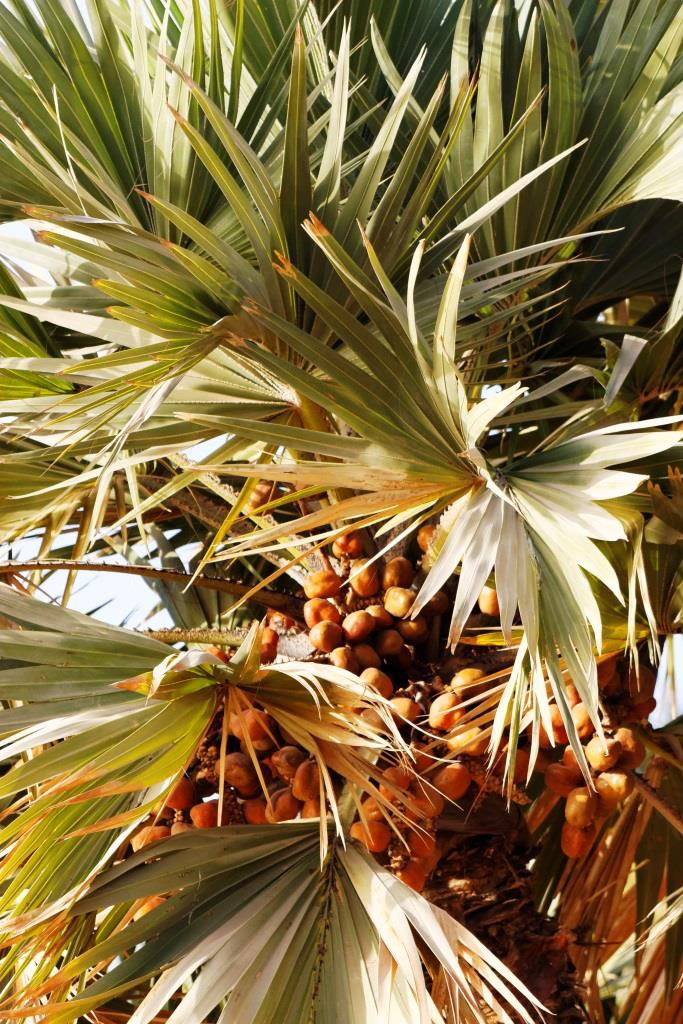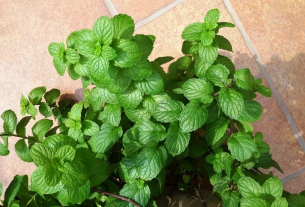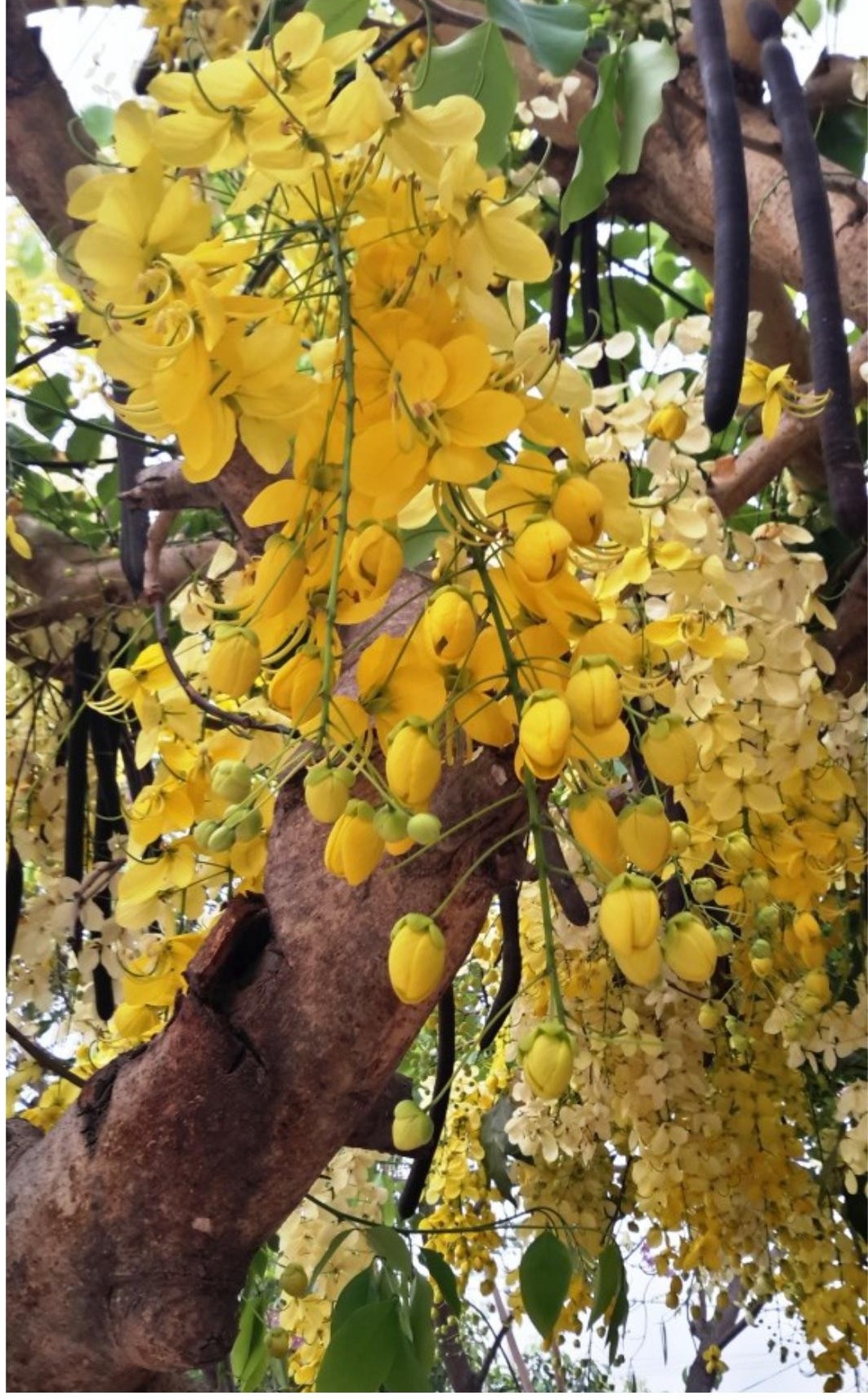By Tommy Clarkson on the October 2019 Edition
Duom Palm Hyphaene thebaica
Family Heliconiaceae
Also known as Gingerbread Palm or Branching Palm
(As was My Patty who passed away May 12th, 2018 these palms are unique, unlike so many others of their relevant 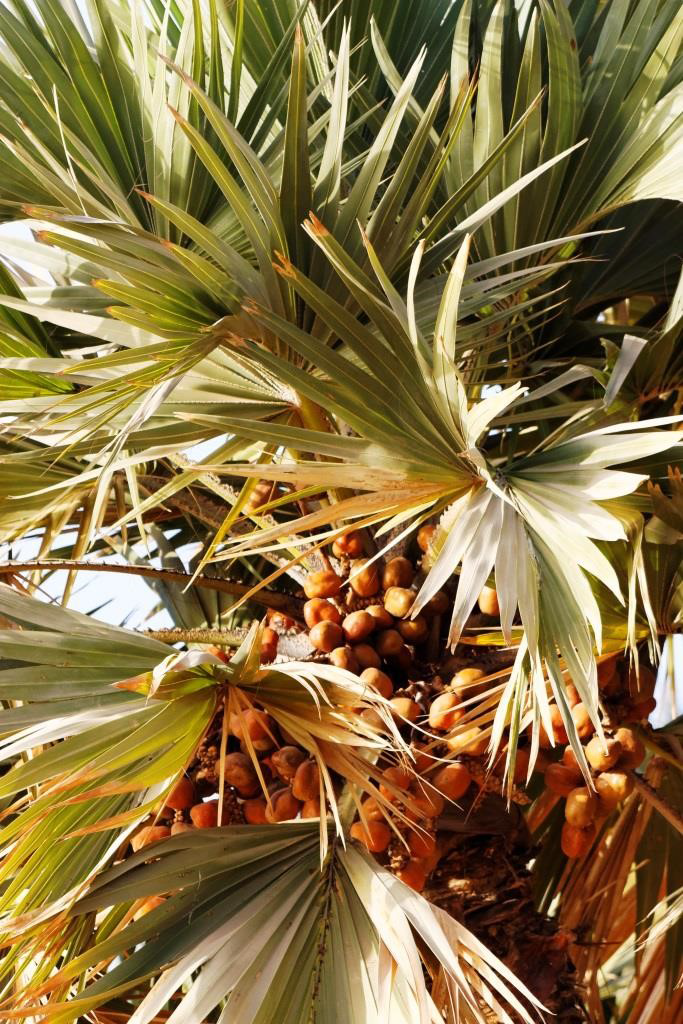 kind and, quite simply, rather rare! What makes these the latter is that, unlike the vast preponderance of other single, erect trunked species, no few of the Duom Palms have trunks that attractively fork (dichotomous branching)! As a result, some authorities consider it the most distinctive of all palm species. Accordingly, I searched for Duom Palm seeds for some time, as I wished to honor she who had been my partner in life, love and in the creation of Ola Brisa Gardens, by displaying some here. Finally, through my pal, Dr. Mark Olson of UNAM, my search was successfully completed. They have sprouted and are now planted. I am yet again in his debt!)
kind and, quite simply, rather rare! What makes these the latter is that, unlike the vast preponderance of other single, erect trunked species, no few of the Duom Palms have trunks that attractively fork (dichotomous branching)! As a result, some authorities consider it the most distinctive of all palm species. Accordingly, I searched for Duom Palm seeds for some time, as I wished to honor she who had been my partner in life, love and in the creation of Ola Brisa Gardens, by displaying some here. Finally, through my pal, Dr. Mark Olson of UNAM, my search was successfully completed. They have sprouted and are now planted. I am yet again in his debt!)
Interestingly, there are perhaps ten species (though I’ve also read that some botanists believe as many as forty) in this genius; but they have yet to be fully identified, studied and as Alan W. Meerow, in Betrock’s Guide to Landscape Palms states “circumscribed from each other.” (Do you think they do that to these baby palms at birth? Groan!)
Other, more commonly recognized species in this genus include the Hala Palm (H. coriacea), Indian Duom Palm (H. indica), the Vegetable Ivory Palm (H. petersiana) and Elala Palm (H. compressa). And, should you wish to produce viable seeds for growing more of these palms, keep in mind that all Hyphaene palms are dioecious (male and female flowers are borne on separate plants.
Historically as written by David L. Jones in “Palms throughout the World” “The Duom Palm was revered by the early Egyptians, with large quantities of fruit being recovered from the tombs of the pharaohs and outlines of the trees being commonly depicted at that time. It is even recorded that plants of this palm were planted in gardens as early as 1800 BC.” Appropriately, it originated in the coastal areas of northern and eastern Africa, growing prolifically along the Nile.
Other species in this genus grow in mid to southern Africa, the Arabian Peninsula, through Madagascar and on the western coastal area of India. According to “Genera Palmerum, The Evolution and Classification of Palms” a tome I, generally, find much too scientific (and way too expensive) for we lay gardeners states, “All species seem to be used by man; thus their distribution has been much influenced by destructive harvesting and accidental or deliberate planting. Elephants and baboons, among other wild animals, are responsible for seed dispersal. Bees have been observed visiting the flowers.” (Well, duh!)
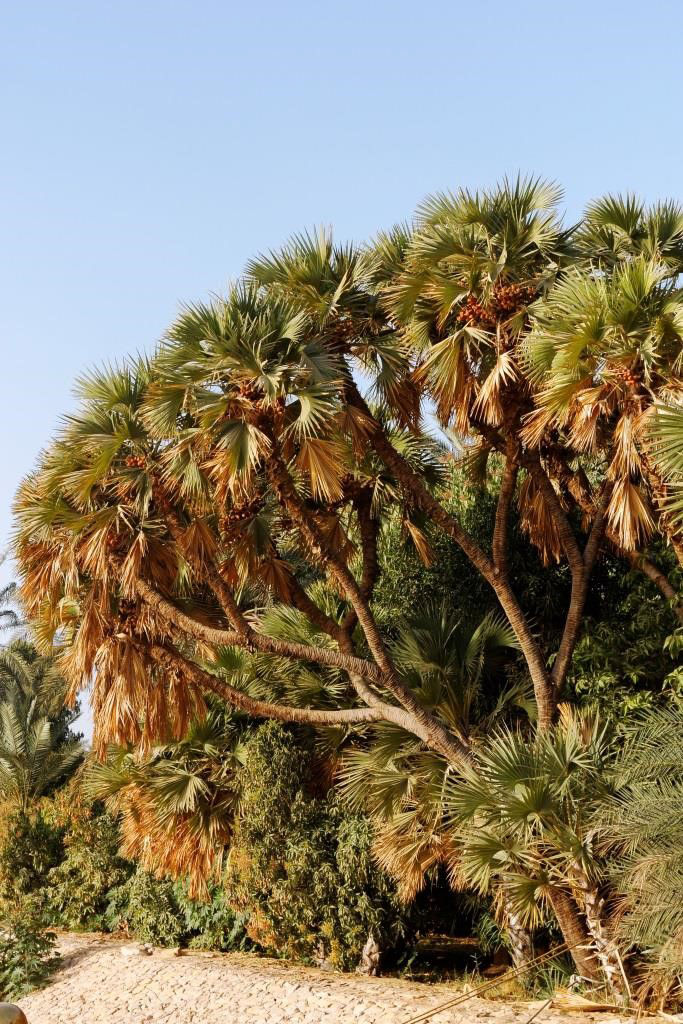
Most of them are lowland growers, however, H. compressa can be found as high as at 4,500 feet (1,371.6 meters) in Kenya and Tanzania. Tolerant of salinity in both the air and soil, all species are drought tolerant, but prefer more adequate watering. That other name for this species, Gingerbread Palm, is purportedly derived as a result of the taste of its fruit! Its Latin epithet comes from “of Thebes” which was an ancient city that thrived along the Nile.
With older plants potentially having many branches, these each end with a crown of stiffly, fanshaped (costapalmate), gray green to silvery-green leaves covered with a whitish wax. These arise atop sturdy petioles, armed with thick, black teeth along their margins. There is a well-developed hastula (this is that lit-tle flap of tissue at the top of the petiole where the leaf proper commences) on the leaf undersides. However, none appear on the top. The leaf sheaths will split with age directly below the petiole.
Dead fronds to the petiole base will, ultimately, drop off, dis-playing a closely ringed trunk. Their mature fruit are oblong to pear-shaped, orange to brown and over three inches (7.62 cm) long. They require open, sunny locales to properly grow.
According to Robert Lee Riffle and Paul Craft, in “An Encyclopedia of Cultivated Palms”, this “species is sparsely clustering and free branching even at a relatively young age. It is similar in general appearance to H. compressa and H. dichotoma but does not grow as tall, although it is almost as massive in old age because of its repeated and dense branching.
Individual trunks never attain more than fifty feet (15.24 meters) of height and are usually thirty feet (9.15 meters) or less. . . The palm is exceptionally picturesque and appealing at all ages.”
The full edition or view it online
—
Tommy Clarkson is a bit of a renaissance man. He’s lived and worked in locales as disparate as the 1.2 square mile island of Kwajalein to war-torn Iraq, from aboard he and Patty’s boat berthed out of Sea Bright, NJ to Thailand, Germany, Hawaii and Viet Nam; He’s taught classes and courses on creative writing and mass communications from the elementary grades to graduate level; He’s spoken to a wide array of meetings, conferences and assemblages on topics as varied as Buddhism, strategic marketing and tropical plants; In the latter category he and Patty’s recently book, “The Civilized Jungle” – written for the lay gardener – has been heralded as “the best tropical plant book in the last ten years”; And, according to Trip Advisor, their spectacular tropical creation – Ola Brisa Gardens – is the “Number One Tour destination in Manzanillo”.
